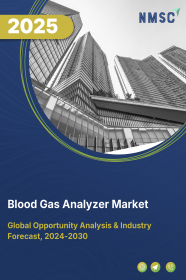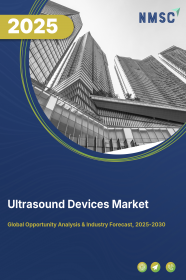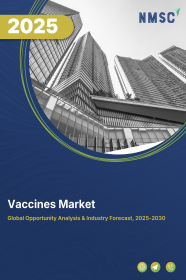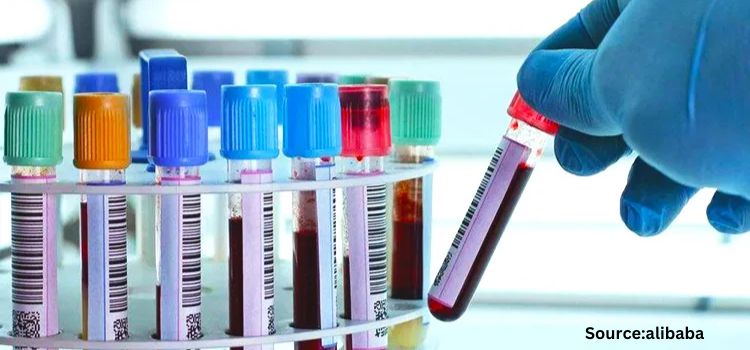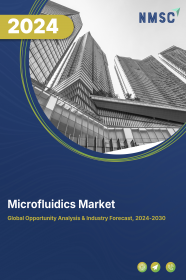
Microfluidics Market by Type (Devices and Components), by Technology (Medical/Healthcare and Non-Medical), by Material (Silicon, Glass, Polymer, PDMS, and Others), by Application (In-vitro Diagnostics, Pharmaceutical & Life Science Research and Manufacturing, and Therapeutics), and by End User (Hospitals & Diagnostic Centres, Academic & Research Institutes, and Pharmaceutical & Biotechnology Companies) – Global Opportunity Analysis and Industry Forecast, 2024 – 2030
Market Definition
The global Microfluidics Market size was valued at USD 29.40 billion in 2023 and is predicted to reach USD 97.26 billion by 2030 with a CAGR of 18.6% from 2024-2030. Microfluidics is a field of science and technology that deals with the behavior, control, and manipulation of fluids in tiny volumes, typically on the micrometer scale. Microfluidic devices are used in a wide range of applications, such as chemical and biological analysis, drug discovery, point-of-care diagnostics, and environmental monitoring. The advantages of microfluidics include the ability to work with small sample volumes, the potential for high-throughput and high-resolution analysis, and the ability to integrate multiple functions onto a single chip. Additionally, microfluidic devices are portable, cost-effective, and can be automated for high-throughput screening, making them a versatile and powerful tool for a variety of research and industrial applications.
Market Dynamics and Trends
The increasing need for high-throughput screening in pharmaceutical and biotechnology sectors drives the microfluidics industry. As it provides rapid analysis of biochemical reactions, cell-based assays, and drug-target interactions, expediting drug discovery and development processes.
Moreover, the microfluidics industry experiences growth driven by increasing demand for point-of-care (POC) diagnostics, facilitated by portable, user-friendly tools enabling rapid testing with minimal sample volumes, crucial for early disease detection and treatment initiation, and improving healthcare access in remote or resource-limited settings.
In addition, rising advancements in personalized medicine by empowering tailored treatment options through small sample analysis for genetic variations and drug responses, while facilitating high-throughput drug screening for accelerated development of tailored therapies.
However, the complex fabrication process of microfluidics systems, along with lack of skilled professionals in the emerging countries for highly complex interfacing and integration process of microfluidics further restrains the growth of the market. On the contrary, the introduction of organ-on-a-chip (OOC) platforms advances the microfluidics industry by replicating human organ structure and function on microfluidic chips, enabling the study of organ-level responses to drugs, toxins, and diseases in vitro. This accelerates drug discovery and development, presenting significant market opportunities in the future.
Market Segmentations and Scope of the Study
The microfluidics market is segmented on the basis of type, technology, material, application, end user and region. On the basis of type, the market is divided into devices and components. Based on components segment is further classified into microfluidic chips, flow & pressure sensors, flow & pressure controllers, microfluidic valves, micropumps, microneedles and other components. On the basis of technology, the market is divided into medical/healthcare and non-medical. The medical/healthcare segment is further divided into PCR & RT-PCR, gel electrophoresis, microarrays, ELISA, and others. On the basis of material, the market is classified into silicon, glass, polymer, PDMS and others. Based on polymer, the market is sub-segmented into polyvinyl chloride (PVC) and non-polyvinyl chloride. On the basis of application, the market is categorized into in-vitro diagnostics, pharmaceutical & life science research and manufacturing and therapeutics. The in-vitro diagnostics segment is further divided into clinical diagnostics, point-of-care testing and veterinary diagnostics. The pharmaceutical & life science research and manufacturing segment is further divided into proteomics, genomics, cell-based assays, capillary, electrophoresis, micro dispensing and micro reaction. The therapeutics segment is further divided into drug delivery and wearable devices. On the basis of end user, the market is classified into hospitals & diagnostic centres, academic & research institutes, and pharmaceutical & biotechnology companies. Regional breakdown and analysis of each of the aforesaid segments includes regions comprising of North America, Europe, Asia-Pacific, and RoW.
Geographical Analysis
North America holds the dominating share of microfluidics market and is expected to dominate the market throughout the forecast period. This is attributed to the factors such as growing demand for microfluidics is propelled by the requirements of the well-established healthcare industry, particularly for advanced diagnostics, personalized medicine, and point-of-care testing, fostering innovation and collaboration to enhance patient care. As per Health Affairs, healthcare expenditure in the U.S. surged to USD 4.5 trillion, marking a 4.1% increase, surpassing the 3.2% growth rate observed in 2021.
Additionally, the rapidly investment in the research & development (R&D) across the region by the nations such as the U.S. and Canada fuels the demand for the microfluidics market. According to the data published by OECD S&T Indicators on American Association for the Advancement of Science (AAAS) in 2023, the U.S. showed 3.1% annual growth, outpacing the European Union. It is still one of the largest spenders on R&D in the world.
On the other hand, Asia-Pacific is expected to show a steady rise in the microfluidics market due to the growth of the chronic diseases among the population across the region. According to the World Health Organization (WHO), China recorded 100 million people living with chronic obstructive pulmonary disease (COPD) that accounts for 25% of all COPD cases globally.
Furthermore, the ongoing development of microfluidics by the regional companies drives the demand for the market. It helps to enhance the accurate identification of microorganisms and testing of their susceptibility to antimicrobial agents among the patients. For instance, Scope Fluidics secured a patent for its microfluidic chip in the Chinese market, marking a significant milestone in the company's intellectual property protection strategy for its innovative technology.
Competitive Landscape
Various market players operating in the microfluidics market include Danaher Corporation, PerkinElmer, Inc, Agilent Technologies, Inc., Bio-Rad Laboratories, Inc., Koninklijke Philips N.V., RainDance Technologies, Quidel Corporation, Abaxis, Inc., Micropoint Bioscience, Inc., Siloam Biosciences, Inc., Dolomite Microfluidics, Miroculus, Illumina, Inc., LumiraDx and Parker Hannifin Corporation among others. These market players are developing new products and adopting various joint venture strategies to maintain their dominance in the microfluidics market.
For instance, in March 2022, Miroculus launched compact and easy-to-use digital microfluidics platform called Miro Canvas to automate complex Next-Generation Sequencing (NGS) sample preparation. Micro Canvas allow users to simplify, automate, and miniaturize complex NGS library preparation by improving library consistency and eliminating the need for robotics.
Key Benefits
-
The microfluidics market report provides the quantitative analysis of the current market and estimations from 2024 to 2030. This analysis assists in identifying the prevailing market opportunities to capitalize on.
-
The study comprises of a comprehensive analysis of the microfluidics market trend including the current and future trends for depicting the prevalent investment pockets in the market.
-
The information related to key drivers, restraints, and opportunities and their impact on the microfluidics market is provided in the report.
-
The competitive analysis of the market players along with their market share in the microfluidics market is mentioned.
-
The SWOT analysis and Porters Five Forces model are elaborated in the study.
-
Value chain analysis in the market study provides a clear picture of the stakeholders’ roles.
Key Market Segments
By Type
-
Devices
-
Components
-
Microfluidic Chips
-
Flow & Pressure Sensors
-
Flow & Pressure Controllers
-
Microfluidic Valves
-
Micropumps
-
Microneedles
-
Other Components
-
By Technology
-
Medical/Healthcare
-
PCR & RT-PCR
-
Gel Electrophoresis
-
Microarrays
-
ELISA
-
Others
-
-
Non-Medical
By Material
-
Silicon
-
Glass
-
Polymer
-
Polyvinyl Chloride (PVC)
-
Non-polyvinyl Chloride
-
-
PDMS
-
Others
By Application
-
In-vitro Diagnostics
-
Clinical Diagnostics
-
Point-of-care Testing
-
Veterinary Diagnostics
-
-
Pharmaceutical & Life Science Research and Manufacturing
-
Proteomics
-
Genomics
-
Cell-based Assays
-
Capillary Electrophoresis
-
Micro dispensing
-
Micro reaction
-
-
Therapeutics
-
Drug delivery
-
Wearable devices
-
-
By End User
-
Hospitals & Diagnostic Centres
-
Academic & Research Institutes
-
Pharmaceutical & Biotechnology Companies
-
By Region
-
North America
-
The U.S.
-
Canada
-
Mexico
-
-
Europe
-
The UK
-
Germany
-
France
-
Italy
-
Spain
-
Denmark
-
Netherlands
-
Finland
-
Sweden
-
Norway
-
Russia
-
Rest of Europe
-
-
Asia-Pacific
-
China
-
Japan
-
India
-
South Korea
-
Australia
-
Indonesia
-
Singapore
-
Taiwan
-
Thailand
-
Rest of Asia-Pacific
-
-
Rest of World
-
Latin America
-
Middle East
-
Africa
-
Key Players
-
Danaher Corporation
-
PerkinElmer, Inc
-
Agilent Technologies, Inc.
-
Bio-Rad Laboratories, Inc.
-
Koninklijke Philips N.V.
-
RainDance Technologies
-
Quidel Corporation
-
Abaxis, Inc.
-
Micropoint Bioscience, Inc.
-
Siloam Biosciences, Inc.
-
Dolomite Microfluidics
-
Miroculus
-
Illumina, Inc.
-
LumiraDx
-
Parker Hannifin Corporation
REPORT SCOPE AND SEGMENTATION:
|
Parameters |
Details |
|
Market Size in 2023 |
USD 29.40 billion |
|
Revenue Forecast in 2030 |
USD 97.26 billion |
|
Growth Rate |
CAGR of 18.6% from 2024 to 2030 |
|
Analysis Period |
2023–2030 |
|
Base Year Considered |
2023 |
|
Forecast Period |
2024–2030 |
|
Market Size Estimation |
Billion (USD) |
|
Growth Factors |
|
|
Countries Covered |
28 |
|
Companies Profiled |
15 |
|
Market Share |
Available for 10 companies |
|
Customization Scope |
Free customization (equivalent up to 80 working hours of analysts) after purchase. Addition or alteration to country, regional, and segment scope. |
|
Pricing and Purchase Options |
Avail customized purchase options to meet your exact research needs. |

















 Speak to Our Analyst
Speak to Our Analyst



